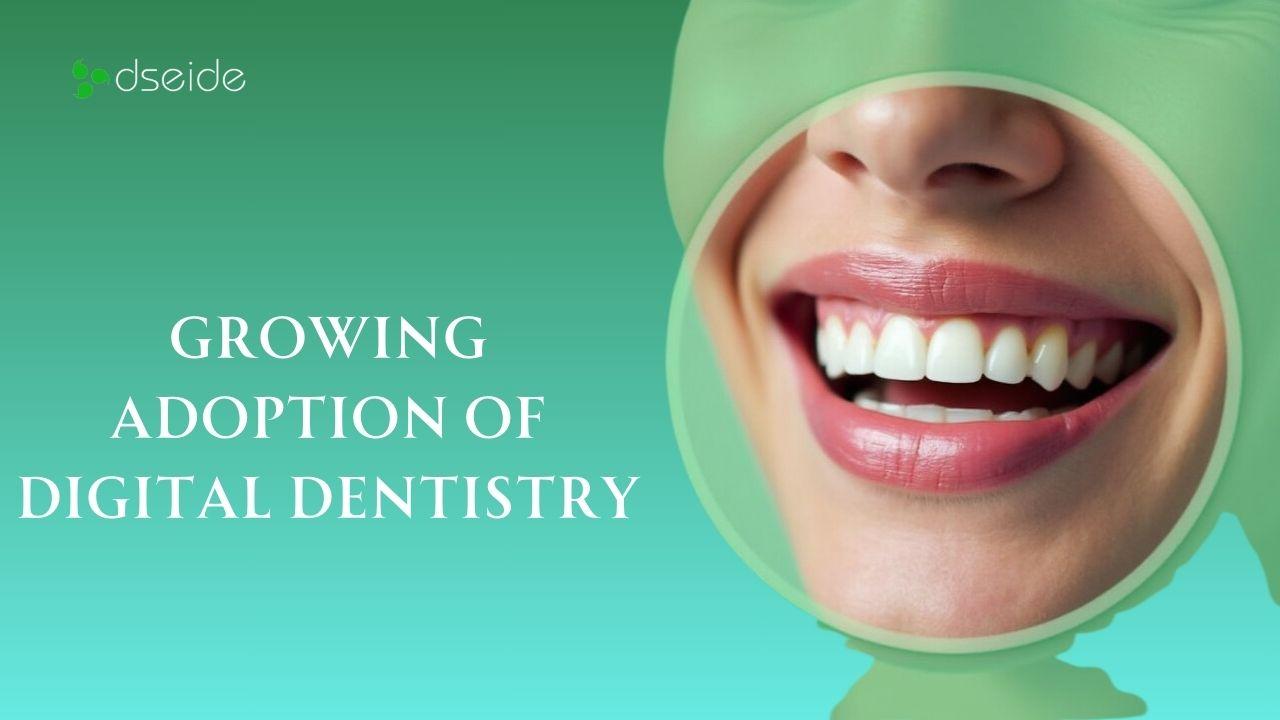Growing Adoption of Digital Dentistry Digital dentistry continues to revolutionize the field with tools like 3D printing, digital imaging, and CAD/CAM (computer-aided design/computer-aided manufacturing) systems. These technologies are improving precision, reducing treatment times, and enhancing patient outcomes. Dentists are increasingly adopting digital impressions, allowing for quicker and more accurate creation of crowns, bridges, and implants.
AI in Dental Care Artificial Intelligence (AI) is playing a growing role in diagnosing dental issues. AI-powered software can now analyze X-rays and detect cavities, fractures, or other abnormalities with high accuracy, assisting dentists in offering better preventive care. This technology is also helping with treatment planning and patient monitoring.
Focus on Preventive Care There is a greater emphasis on preventive dental care to reduce the need for more invasive treatments. More patients are now focusing on regular check-ups, proper oral hygiene, and minimally invasive procedures like fluoride treatments and sealants to prevent decay and gum disease.
Dental Tourism Dental tourism continues to rise, with countries like Mexico, Thailand, and India becoming popular destinations for affordable yet high-quality dental care. Many patients from countries like the U.S. and U.K. are seeking treatments abroad to save on costs while still receiving excellent care. Dental implants, cosmetic procedures, and full-mouth restorations are among the most sought-after treatments.
Sustainability in Dental Practice There’s also growing awareness about sustainability in dentistry. Eco-friendly dental practices are gaining popularity, focusing on reducing plastic waste from single-use dental tools, using biodegradable materials, and encouraging energy-efficient practices.
These trends showcase the advancements and shifts in dental care, helping improve both patient experience and clinical outcomes.
AI in Dental Care Artificial Intelligence (AI) is playing a growing role in diagnosing dental issues. AI-powered software can now analyze X-rays and detect cavities, fractures, or other abnormalities with high accuracy, assisting dentists in offering better preventive care. This technology is also helping with treatment planning and patient monitoring.
Focus on Preventive Care There is a greater emphasis on preventive dental care to reduce the need for more invasive treatments. More patients are now focusing on regular check-ups, proper oral hygiene, and minimally invasive procedures like fluoride treatments and sealants to prevent decay and gum disease.
Dental Tourism Dental tourism continues to rise, with countries like Mexico, Thailand, and India becoming popular destinations for affordable yet high-quality dental care. Many patients from countries like the U.S. and U.K. are seeking treatments abroad to save on costs while still receiving excellent care. Dental implants, cosmetic procedures, and full-mouth restorations are among the most sought-after treatments.
Sustainability in Dental Practice There’s also growing awareness about sustainability in dentistry. Eco-friendly dental practices are gaining popularity, focusing on reducing plastic waste from single-use dental tools, using biodegradable materials, and encouraging energy-efficient practices.
These trends showcase the advancements and shifts in dental care, helping improve both patient experience and clinical outcomes.
Growing Adoption of Digital Dentistry Digital dentistry continues to revolutionize the field with tools like 3D printing, digital imaging, and CAD/CAM (computer-aided design/computer-aided manufacturing) systems. These technologies are improving precision, reducing treatment times, and enhancing patient outcomes. Dentists are increasingly adopting digital impressions, allowing for quicker and more accurate creation of crowns, bridges, and implants.
AI in Dental Care Artificial Intelligence (AI) is playing a growing role in diagnosing dental issues. AI-powered software can now analyze X-rays and detect cavities, fractures, or other abnormalities with high accuracy, assisting dentists in offering better preventive care. This technology is also helping with treatment planning and patient monitoring.
Focus on Preventive Care There is a greater emphasis on preventive dental care to reduce the need for more invasive treatments. More patients are now focusing on regular check-ups, proper oral hygiene, and minimally invasive procedures like fluoride treatments and sealants to prevent decay and gum disease.
Dental Tourism Dental tourism continues to rise, with countries like Mexico, Thailand, and India becoming popular destinations for affordable yet high-quality dental care. Many patients from countries like the U.S. and U.K. are seeking treatments abroad to save on costs while still receiving excellent care. Dental implants, cosmetic procedures, and full-mouth restorations are among the most sought-after treatments.
Sustainability in Dental Practice There’s also growing awareness about sustainability in dentistry. Eco-friendly dental practices are gaining popularity, focusing on reducing plastic waste from single-use dental tools, using biodegradable materials, and encouraging energy-efficient practices.
These trends showcase the advancements and shifts in dental care, helping improve both patient experience and clinical outcomes.







